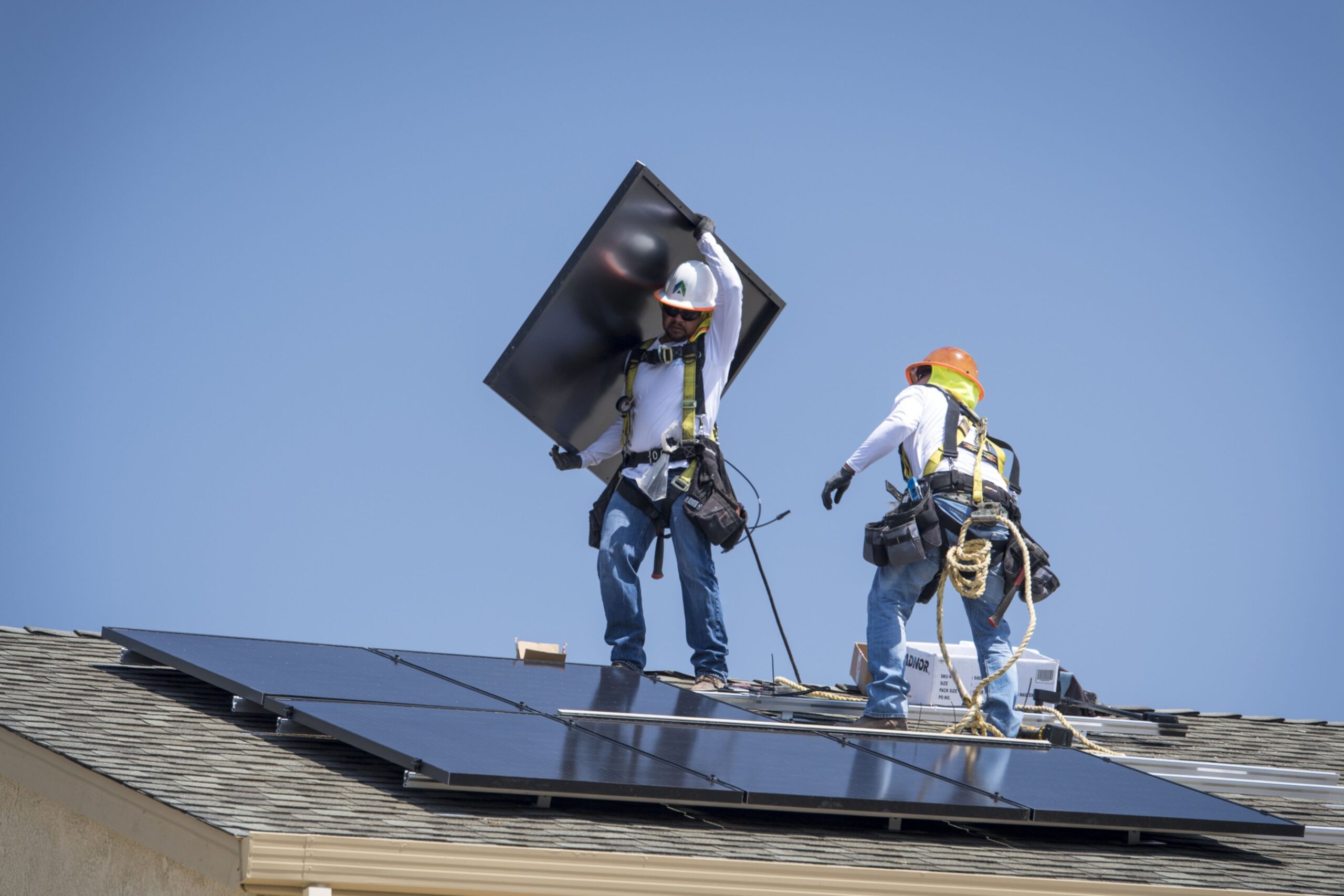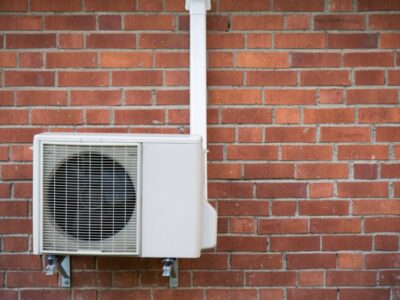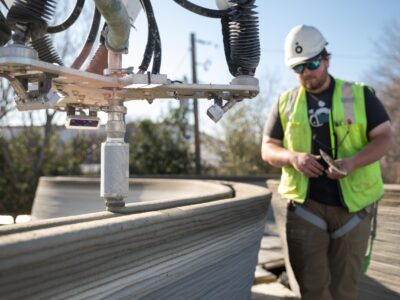(Bloomberg) —
U.S. President Joe Biden just signed into law the American Rescue Plan, a $1.9 trillion relief package and his first major piece of legislation. The administration has signaled the next stimulus will focus on infrastructure — but it will have to tackle more than just better bridges and highways.
Infrastructure improvements need to start at home, according to climate advocates and industry executives. More specifically, they see residential investments as the key to jobs, equity and public health — fulfilling the president’s pledge to “build back better.” Grid weatherization, building efficiency upgrades, low-income energy assistance and rebates for retrofits should serve as the engine for the next infrastructure package, according to a new report from the Roosevelt Institute, a think tank, and the Evergreen Collaborative, a climate change advocacy group. They plan to offer lawmakers a suite of detailed policies and options to consider as they craft new legislation.
“We have a president who has called for a $2 trillion climate investment package. We have a Congress that is formulating a massive infrastructure package as part of the next wave of stimulus response,” says Bracken Hendricks, a Roosevelt Institute fellow and co-founder of the Evergreen Collaborative. He is also the chief executive officer of Urban Ingenuity, a firm that provides support and financing for property owners investing in upgrades (and a company that would stand to benefit from such an initiative). Hendricks adds, “Unless homes and buildings are at the center of that infrastructure package and job creating agenda, we will fall short.”
Some leaders have been zeroing in on residential retrofits for a while. Late in 2019, Vermont Senator Bernie Sanders and New York Representative Alexandria Ocasio-Cortez proposed a Green New Deal for Public Housing Act to commit billions of dollars to upgrading the nation’s 1.2 million federally subsidized public housing units. Advocates for the construction of new public housing place a lot of emphasis on creating sustainable net-zero-energy homes and the jobs to go with them. Europe is on this tip, too: The European Union’s Green Deal calls for a “renovation wave” of 2% of the continent’s building stock every year.
Yet progressive bids to go all in on home energy retrofits often lack clear details about how this is supposed to be achieved. Minnesota Representative Ilhan Omar’s Homes for All Act, a mile-marker proposal to invest $1 trillion in new public housing, offers only a single sentence to say that these millions of homes should “focus on minimizing energy costs and achieving carbon neutrality.”
“Not only do these policies create jobs and help homeowners save money, they also lead to healthier households and a cleaner environment.”
By filling out the details, the researchers say they hope to anchor ongoing debates about the shape of future stimulus spending. Lawmakers may bring an infrastructure bill forward by late May with the goal of passing it around September, according to Politico. Hendricks and co-authors point to the winter disaster in Texas that left ratepayers on the hook for excessive energy bills in the wake of power failures as underscoring the urgent need for action that treats homes as essential components in climate and health systems.
“There are 140 million housing units in America. When we’re looking at energy demand, these buildings are often overlooked,” says Kara Saul Rinaldi, president and CEO of the AnnDyl Policy Group and a co-author of the report. “Why is that? What is it that is making us not take a comprehensive approach to addressing these millions and millions of homes?”
Making sense of all these disparate policy goals is the work that needs to happen now, says Saul Rinaldi. Some policymakers are focused on the electric grid. Others are working on the other side of the meter to improve appliances and technology where the grid meets the home. Still others are looking at energy efficiency as a workforce or financing or tax credit issue. “The sum of all these different solutions is greater together than apart,” she says.
The plan recommended by the authors — Hendricks and Saul Rinaldi, along with Evergreen Action deputy press secretary Wes Gobar as well as Mark Wolfe and Cassandra Lovejoy of the National Energy Assistance Directors Association — dovetails existing policies or proposals into a single comprehensive framework. Some existing tools can be modernized and expanded, including the Low-Income Home Energy Assistance Program and Weatherization Assistance Program, federal programs that work hand in hand to provide direct assistance to families and enjoy bipartisan support. Home energy affordability for low-income households is one piece; rebates, tax credits and subsidized loans for energy retrofits for middle-class homeowners is another one.
The report’s recommendations for jobs revolve around the HOPE for HOMES Act, a bill proposed by Maryland Senator Chris Van Hollen in 2020. That bill has two components: a training and certification for contractors (“Home On-line Performance-based Energy efficiency” or HOPE) that qualifies companies to participate in a rebate program for homeowners (“Home Owner Managing Savings” or HOMES). The pandemic thinking behind the bill was to pay contractors during the downturn to upgrade their skills while giving homeowners access to funds to pay for upgrades as the economy opens up. While the bill couldn’t find traction with lawmakers in 2020, it has the support of the wonky Institute for Market Transformationas well as the blue-collar Air Conditioning Contractors of America.
“Tackling climate change and strengthening our struggling economy go hand in hand. As we work to address these dueling challenges, addressing energy efficiency in Americans’ homes can support our efforts on both fronts,” Van Hollen said in a statement. “Not only do these policies create jobs and help homeowners save money, they also lead to healthier households and a cleaner environment.”
The proposals in the report would ramp up other existing government programs as well— the authors recommend tripling the federal 25C tax credit for energy-efficient HVAC systems from $500 to $1,500, for example — so most of it would be eligible for passage via budget reconciliation. While Republicans declined to lend their support to the American Rescue Plan, Hendricks points to past conservative and industry support for various parts of the housing-energy-infrastructure portfolio as reason to hold out hope for bipartisan compromise. “If Congress wanted to pass legislation, there’s certainly 60-plus votes for these measures,” he says.
Some of the proposals have been sitting on the shelf. Colorado Senator Michael Bennet first introduced the Sensible Accounting to Value Energy (SAVE) Act — a bill that would allow mortgage lenders to take into account a home’s energy-efficiency savings when determining a buyer’s ability to afford a house — with his former Republican counterpart, Georgia Senator Johnny Isakson, back in 2013. Given the historically low cost for borrowing, high unemployment rate and dire climate crisis manifesting in new ways every season, Hendricks says, the Biden administration has an opportunity to surface good ideas that the country should have taken up a long time ago — and a narrow window to fulfill its campaign promises.
Saul Rinaldi warns that lawmakers risk missing the forest for the trees if they pick up only the parts of the housing-energy-retrofits portfolio that suit their agenda. The financing works in tandem with rebates, subsidies and job training to balance costs with offsets and incentives — and make housing safer, fairer, more sustainable and ultimately cheaper.
“The issue is not just can we afford it,” Saul Rinaldi says. “It’s can we afford not to do it? It will just cost more down the road if we continue to ignore the need that’s right in front of us.”
To contact the author of this story:
Kriston Capps in Washington at kcapps3@bloomberg.net
© 2021 Bloomberg L.P.





